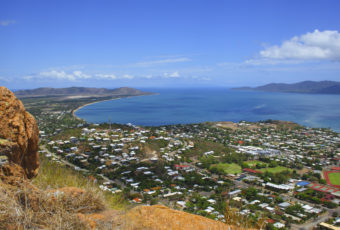Climate detectives find handprint of climate change in Australia
Four new research studies suggest that Australia’s recent droughts and heat waves of record-breaking seasons of 2013 were virtually impossible without the influence of global warming. And at its most conservative, the evidence showed that the record hot year of 2013 was made 2,000 times more likely by global warming.
The four new papers from researchers who are part of the ARC Centre of Excellence for Climate System Science (ARCCSS) was published recently in a special edition of the Bulletin of the American Meteorological Society (BAMS).

In 2013, Australia’s extreme heat broke all records. Australia had its hottest day and hottest month on record, its hottest summer and its hottest spring on record rounded it off with the hottest year on record.
“We often talk about the fingerprint of human influences on climate change when we look at extreme weather patterns,” said Prof David Karoly, an ARCCSS researcher with the University of Melbourne. “This research across four different papers goes well beyond that.
“If we were climate detectives then Australia’s hottest year on record in 2013 wasn’t just a smudged fingerprint at the scene of the crime; it was a clear and unequivocal handprint showing the impact of global warming.”
The researchers found global warming doubled the chance of the most intense heat waves, tripled the likelihood of a heat wave events occurring, and also made extreme summer temperature across Australia five times more likely. It also increased the chance of hot, dry, drought-like conditions by seven times, and made hot spring temperatures across Australia 30 times more likely.
“When it comes to what helped cause our hottest year on record, climate change is no longer a prime suspect; it is the guilty party,” said researcher Dr Sophie Lewis, from the Australian National University. “Too often we talk about climate change impacts as if they are far in the future. This research shows they are here, now.”
“The most striking aspect of the extreme heat of 2013 and its impacts is that this is only at the very beginning of the time when we are expected to experience the first impacts of climate change,” said Dr Sarah Perkins from the University of New South Wales. “If we continue to put carbon into our atmosphere at the currently accelerating rate, years like 2013 will quickly be considered normal and the impacts of future extremes will be well beyond anything modern society has experienced.”
University of Melbourne Master of Environment
Program title: Master of Environment
Location: Melbourne, Victoria
Semester intake: March 2015
Program duration: 1 – 2 years, depending on candidate’s background
The Master of Environment is a flexible, multidisciplinary course. Depending on your academic background, interests and career aspirations you can choose from more than 200 subjects taught by 10 different faculties. Design your own degree by taking a tailored program or specialise in one of 13 environmentally relevant areas:
- Climate Change
- Conservation, Restoration and Landscape Management
- Development
- Education
- Energy Efficiency Modelling and Implementation
- Energy Studies
- Environmental Science
- Governance, Policy and Communication
- Integrated Water Catchment Management
- Public Health
- Sustainable Cities, Sustainable Regions
- Sustainable Forests
- Waste Management
Climate Change Stream
The Climate Change stream is ideal for students seeking an interdisciplinary perspective on climate change, for work in policy-making or business advisory roles. Graduates will be well placed to offer leadership through a solid understanding of theoretical and practical applications of policy and science; technological limits, potentials and risks; and the value of addressing a wide-ranging global environmental issue from a trans-disciplinary perspective.
Capstone Experience
Master of Environment students will complete a capstone experience, applying their knowledge to problem solving and demonstrating their capacity for independent professional judgement—skills highly valued by employers. This may involve a research project, internship or a field-based team
project.
Career Opportunities
Additionally, this stream presents an opportunity for students to establish extensive networks with fellow climate change professionals across a broad range of industries, sectors and fields of endeavour. Graduates of this major can expect to find employment in state and federal government authorities, environmental consulting companies, business advisory and strategic policy-making positions worldwide.
*

































Ask A Question
Ask us about your program of interest, or if you have a question about our services.
CONTACT US TODAY